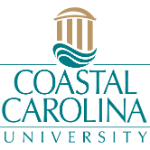Below is a summary of the abstract you submitted. Presenting author(s) is shown in bold.
If any changes need to be made, you can modify the abstract or change the authors.
You can also download a .docx version of this abstract.
If there are any problems, please email Dan at dar78@pitt.edu and he'll take care of them!
This abstract was last modified on March 21, 2023 at 9:15 p.m..

Bacteriophages are ubiquitous viruses containing extremely diverse genomes. Although many phage genomes have been annotated using bioinformatics, a majority of genes phamlies lack wet-bench functional characterization. Elucidating individual phage gene function on host growth and the phage-host protein interactions causing such phenotypes allows for the exploration of novel antibacterial therapies within the context of phage-host biology. Our goal is to systematically characterize the genome of the temperate mycobacteriophage Phayonce (P5) by determining the effect of individual gene expression on host cell growth and identifying possible phage-host protein interactions. To accomplish this, a library of inducible expression vectors was generated containing each of Phayonce’s 77 genes. Individual plasmids were then transformed into the host cell Mycobacterium smegmatis. Transformants were then plated on selective media to induce gene expression and the resulting host colony phenotype was observed for signs of cytotoxicity. A total of 29 genes were identified as cytotoxic. Of these genes, genes 41 and 64, which lack a bioinformatically identified function, showed near-total inhibition of colony formation. To identify the host proteins that interact with these genes, we performed a bacterial two-hybrid screen and isolated numerous host protein fragments of possible interaction partners. Since novel genes 41 and 64 exhibit extreme cytotoxicity, they represent prime examples of genes that can be utilized in antibacterial therapy development. We are currently verifying putative host protein interaction candidates and plan on sequencing them to identify the host interaction partners that could mediate the cytotoxic phenotype. Once identified, these interaction partners can be assessed as potential drug targets due to their significant effect on bacterial host growth. In particular, the identified cytotoxic genes in Phayonce and corresponding M. smegmatis interaction partners are possible treatments against other pathogenic mycobacteria, such as M. tuberculosis.

